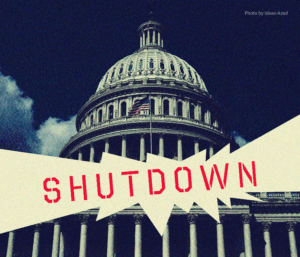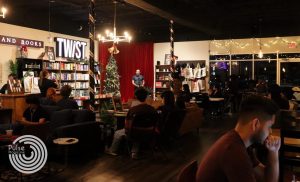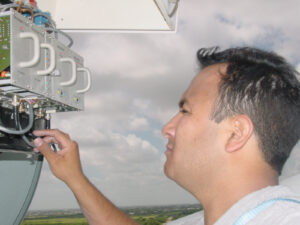No Border Wall | No al Muro
By Ashley Mathew
Trump’s border wall has since gained national attention in the last few weeks as its initial construction date draws closer. Just last month the Trump administration announced it had waivered 28 U.S. Environmental and Health protection laws relating to public land, endangered wildlife, clean air and water to ensure smooth construction come February 2019.
The wall itself threatens to impact migration patterns and cause flooding due to the concrete levee-style walls. Dozens of imperiled animals such as the ocelot will have their habitats destroyed. Bentsen State Park, The National Butterfly Center, and Santa Ana National Wildlife Refuge are just some of the areas to be impacted by the proposed construction areas.
Conservation groups have been quite outspoken about their strong resistance against the wall. A lawsuit was filed back in October in response to the numerous waivers issued by Homeland Security to expedite the process. Groups from all over have submitted around 38,000 comments to U.S. Customs and Border Protection in opposition to the border wall. On Sunday, November 11th opponents held a town hall across the street from the local Border Patrol station.
Groups from all over have submitted around 38,000 comments to U.S. Customs and Border Protection in opposition to the border wall.
Sunday’s protest was in response to officials refusing to meet with community members and activists. For the community here in the Valley many see the project as a disaster and the protest is just the beginning of a public outcry against the governments’ actions. Landowners, local educators, and community groups gathered to stand together to unite against the border wall and the implications that come with it.
Over the past year, the U.S. Customs and Border Protection Agency has unlawfully been entering and clearing private properties. They have left numerous landowners with no other option than to give up their land with no compensation. Open disregard to the community’s thoughts and voices came when the federal government awarded SLSCO, a construction firm based in Galveston, a $145-million-dollar contract for the first six miles of the thirty-three-mile wall in Hidalgo County. Despite the constant opposition and refusal from the CBP towards the town hall, residents were determined to hold it.
The town hall was a show of defiance and a message to the Trump Presidency that the Valley will not sit back in silence. The wall was never about border security or protection. It is being built upon political antics and racial fears. The way that the Valley is being described on the news makes those who don’t live here view us as chaotic.
Alán Diaz Santana explains that “Our community is lacking so many other things like infrastructure. We need better public transport, we need better drainage, we need all sorts of things that we don’t have. But somehow to fight off this imaginary threat, we need to spend billions of dollars on a border wall that we don’t need.”
During the town hall meeting, several members voiced out their personal connections with the areas to be destroyed by the first six miles of the wall. One of the main being La Lomita Mission, in which the federal government is demanding its possession. The historic building has stood on the grounds since 1899. The Catholic Diocese of Brownsville has strongly stood in defiance against this request stating it is in violation of freedom of religion. Bishop Daniel Flores declared that church property would not be used for border security as it abridges the rights of the dioceses.
In addition to the issue of the wall itself, the community is concerned about the increasing militarization and ecological damage. Just this month thousands of U.S. Army troops were deployed to Donna, Texas against the caravan of immigrants moving North. With their arrival comes numerous impacts both to the community and ecologically sensitive areas.
The border region is home to many unique plant and animal species spread throughout wildlife refuges, national parks, and tribal lands. The placement of such a bisect will affect the population diversity of various species leading to inbreeding and an increased risk of extinction. Wall structures have historically interrupted water sources, pollination patterns, habitat corridors, and mating. Protected areas across the Lower Rio Grande Valley are responsible for maintaining a healthy ecosystem and viable populations of important species. Conservation groups have explained that the physical division between Texas and Mexico could impact their binational relationships when it comes to conservation efforts.
Wall structures have historically interrupted water sources, pollination patterns, habitat corridors, and mating.
The National Park Service stated that the Rio Grande has already lost seven native fish species due to pollution and climate change. With rising temperatures and CO2 levels, the biodiversity of the planet will likely suffer further with the placement of such a wall. Scientists have proposed a widespread natural restoration to the border area and for Congress to opt for other solutions to maintain the security of the southern border in order to maintain a viable ecosystem.
“CBP continues to implement President Trump’s Executive Order 13767 – also known as Border Security and Immigration Enforcement Improvements – and continues to take steps to expeditiously plan, design, and construct a physical wall using appropriate materials and technology to most effectively achieve complete operational control of the southern border.”
–U.S. Customs and Border Protection
No Border Wall Community Camp & Night OutIf you would like to learn more about the risks and ramifications involved with the placement of the border wall, please join the Santa Ana National Wildlife Refuge at the No Border Wall Community Campout. The community is invited to spend a day or night out at the Bentsen-Rio Grande Valley State Park before it could be lost to Trump’s border wall. All participants are asked to arrive by 4:30 PM on Saturday, December 8, 2018.Click HereTake Action!If you would like to get involved in the grassroots efforts regarding taking action against the construction of the wall you can get involved in the Lower Rio Grande Valley Sierra Club.Click HereTell Congress: Don’t Waste BILLIONS On Border WallsClick Here
READ MORE…
Facebook
Twitter
Instagram
Youtube
Pulse Magazine 2018. The views on this website do not necessarily represent the views of the University of Texas Rio Grande Valley or it’s employee’s.









